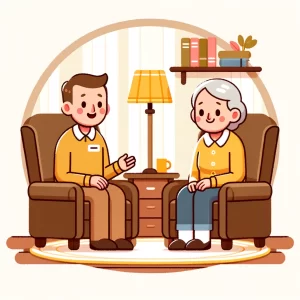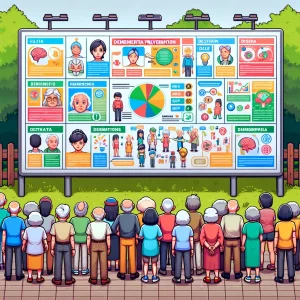
How Discrimination and Neighborhood Disarray Fuel Loneliness in Older Adults
Have you ever felt alone in a crowded room? Imagine that feeling persisting, day in and day out, exacerbated not just by a lack of companionship but also by the very environment you live in. For many older adults in the United States, loneliness isn’t just a temporary condition but a persistent reality influenced by factors well beyond their control.
Recent research using data from the Health and Retirement Study, involving 9,904 participants, sheds light on this issue, revealing that loneliness among older adults is significantly influenced by perceived institutional discrimination, stressful life events, and unfavorable neighborhood characteristics. This isn’t just about feeling lonely; it’s about understanding how systemic issues compound this loneliness, particularly among Black, Hispanic/Latinx, and White communities.
Understanding the Roots of Loneliness
Loneliness is often visualized as an individual sitting alone at home, but it’s much more complex. For older adults, it can be a symptom of broader societal issues such as discrimination and neighborhood disarray. The study finds that loneliness correlates strongly with experiences of unfair treatment in job hiring, interactions with law enforcement, and living in disordered neighborhoods. These experiences aren’t just uncomfortable; they make it harder to form and maintain social connections.
Imagine a scenario where an older Black man, previously active in his community, finds himself repeatedly stopped and questioned by police in his own neighborhood. Over time, he might withdraw from his daily walks or community gatherings, increasing his isolation and, consequently, his feelings of loneliness. Such scenarios are not uncommon and highlight how systemic discrimination can translate into personal suffering.
Racial and Ethnic Variations in Loneliness
The impact of these stressors isn’t uniform across all racial and ethnic groups:
- Black older adults reported higher levels of loneliness linked to moving to worse residences and being victims of crime.
- Hispanic/Latinx older adults showed a unique pattern where being prevented from moving to a neighborhood increased loneliness, yet, interestingly, experiencing burglary decreased it, possibly due to increased community support in the aftermath.
- White older adults experienced loneliness more acutely from job discrimination and unfair police treatment, suggesting that these may be less common but more impactful when they occur.
Neighborhood Influence on Social Bonds
The role of neighborhood conditions in shaping loneliness is profound. Older adults, especially those with limited mobility, rely heavily on their immediate surroundings for social interaction. Discohesion and disorder in a neighborhood can significantly hinder the ability of these individuals to engage with their community, leading to increased isolation. For instance, a neighborhood marked by vandalism and a lack of communal spaces likely discourages social gatherings, reducing opportunities for older adults to connect with others.
What’s Next? Addressing the Challenges
Looking ahead, it’s clear that addressing loneliness among older adults requires more than just creating social programs. It requires a systemic approach to reduce discrimination and improve neighborhood conditions. Community planners and policymakers need to consider how urban design influences social interactions, especially for those who are most vulnerable.
Join the Conversation
This study not only highlights the factors contributing to loneliness but also invites us to rethink how we shape our social and physical environments to better support older adults. I’d love to hear your thoughts:
- Have you or someone you know experienced loneliness linked to these factors?
- What changes can be made in your community to combat these issues?
- How can we foster a more inclusive and supportive environment for all older adults?
Understanding and addressing the root causes of loneliness is not just about improving individual lives but about fostering healthier, more vibrant communities that value and support their older members.
Be a Changemaker – Join Us Today!
Stay ahead of the latest public health developments. Subscribe for free now to receive weekly updates that empower you to lead and create impact.
💡 Every moment counts! Share this blog and invite others to take action for a healthier tomorrow.



